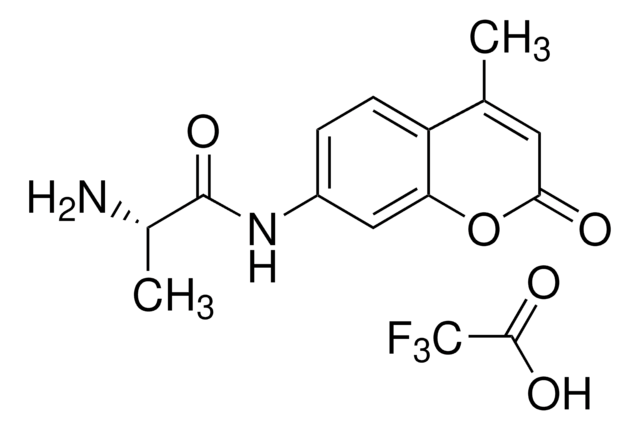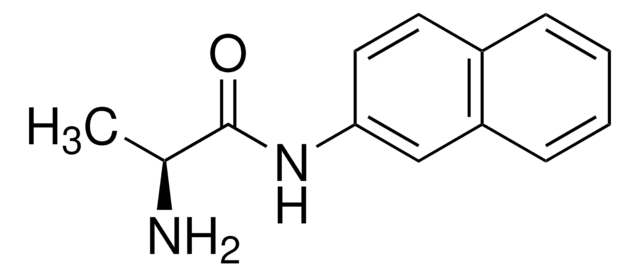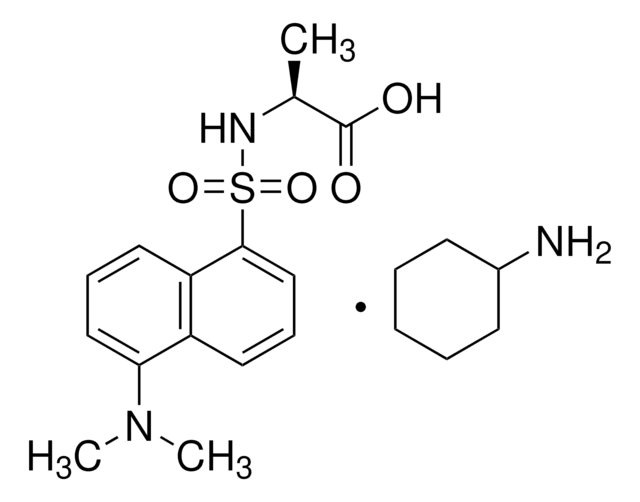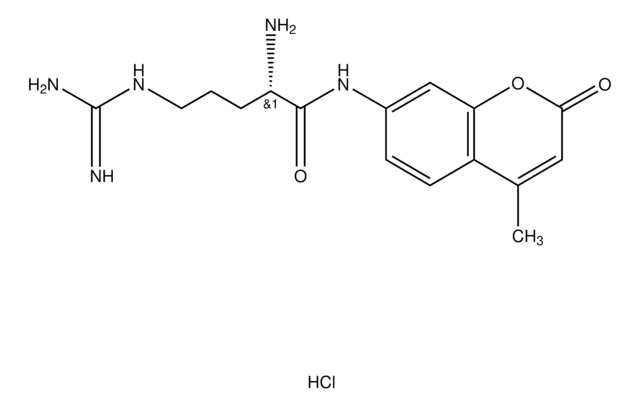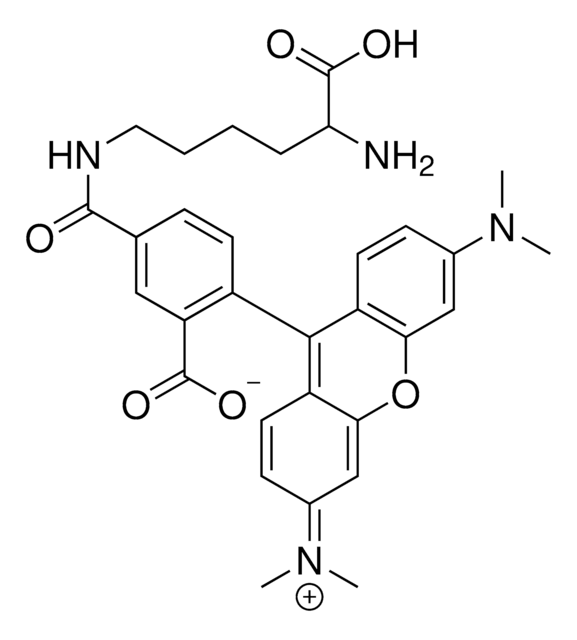A1057
L-Aspartic acid β-(7-amido-4-methylcoumarin)
≥98%, suitable for ligand binding assays
Synonim(y):
L-Aspartic acid β-(4-methyl-7-coumarinylamide), L-Aspartic acid 4-(4-methyl-7-coumarinylamide)
About This Item
Polecane produkty
product name
L-Aspartic acid β-(7-amido-4-methylcoumarin), fluorescent amino acid
Próba
≥98%
Postać
powder
metody
ligand binding assay: suitable
kolor
white to off-white
temp. przechowywania
−20°C
ciąg SMILES
CC1=CC(=O)Oc2cc(NC(=O)C[C@H](N)C(O)=O)ccc12
InChI
1S/C14H14N2O5/c1-7-4-13(18)21-11-5-8(2-3-9(7)11)16-12(17)6-10(15)14(19)20/h2-5,10H,6,15H2,1H3,(H,16,17)(H,19,20)/t10-/m0/s1
Klucz InChI
ARZPQBJTLVVDNP-JTQLQIEISA-N
Szukasz podobnych produktów? Odwiedź Przewodnik dotyczący porównywania produktów
Powiązane kategorie
Działania biochem./fizjol.
Kod klasy składowania
11 - Combustible Solids
Klasa zagrożenia wodnego (WGK)
WGK 3
Temperatura zapłonu (°F)
Not applicable
Temperatura zapłonu (°C)
Not applicable
Środki ochrony indywidualnej
Eyeshields, Gloves, type N95 (US)
Certyfikaty analizy (CoA)
Poszukaj Certyfikaty analizy (CoA), wpisując numer partii/serii produktów. Numery serii i partii można znaleźć na etykiecie produktu po słowach „seria” lub „partia”.
Masz już ten produkt?
Dokumenty związane z niedawno zakupionymi produktami zostały zamieszczone w Bibliotece dokumentów.
Nasz zespół naukowców ma doświadczenie we wszystkich obszarach badań, w tym w naukach przyrodniczych, materiałoznawstwie, syntezie chemicznej, chromatografii, analityce i wielu innych dziedzinach.
Skontaktuj się z zespołem ds. pomocy technicznej